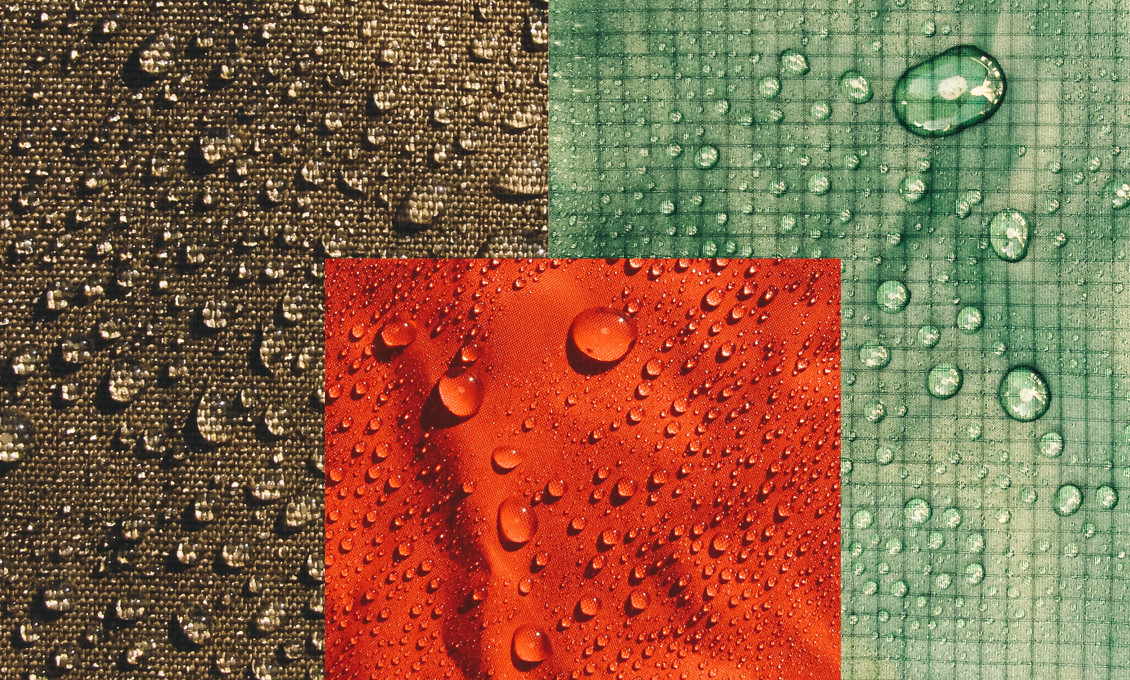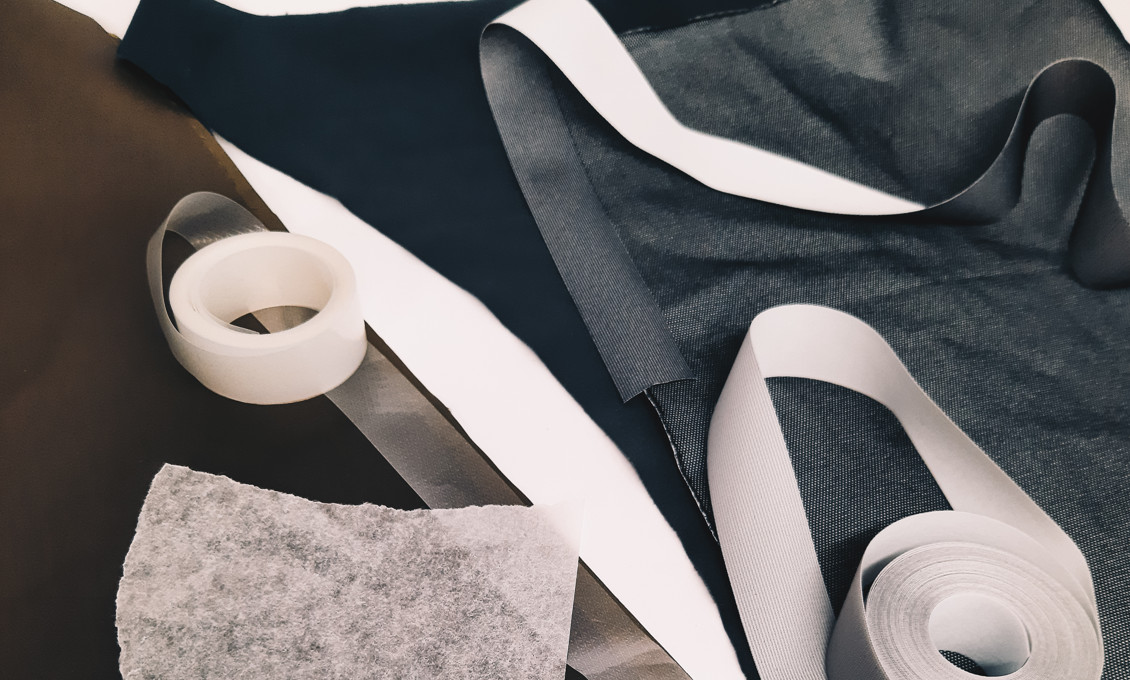Water- & Wind-proof fabrics
Often when a fabric is waterproof, it's also windproof. These fabrics are essentially sealed, which means they don't allow any water or air to enter at all. Often these fabrics are made of rubber, polyurethane or silicone.
There are waterproof fabrics to fit every use case. The fabrics differ in their barriers and weights. The fabrics can have barriers such as coatings (rigid), laminations (flexible), or wax (rigid). Heavy-weight fabrics are used for outside furniture and to cover equipment, mid-weight fabrics are best for backpacks, tents, bags, gear and garment reinforcements, while light-weight fabrics are best for clothing, ultra-light gear and light-weight reinforcements.
While all material lets some sweat out, water-and wind-proof fabric let out the least. If you expect to sweat a lot on your adventure, and your base-and mid-layer garments aren't very moisture absorbent, you might end up wet. Adding in ventilation holes, such as armpit holes in form of grommit holes or zippers, is always possible. But it might also be enough to wear a water-and wind-resistance fabric.

